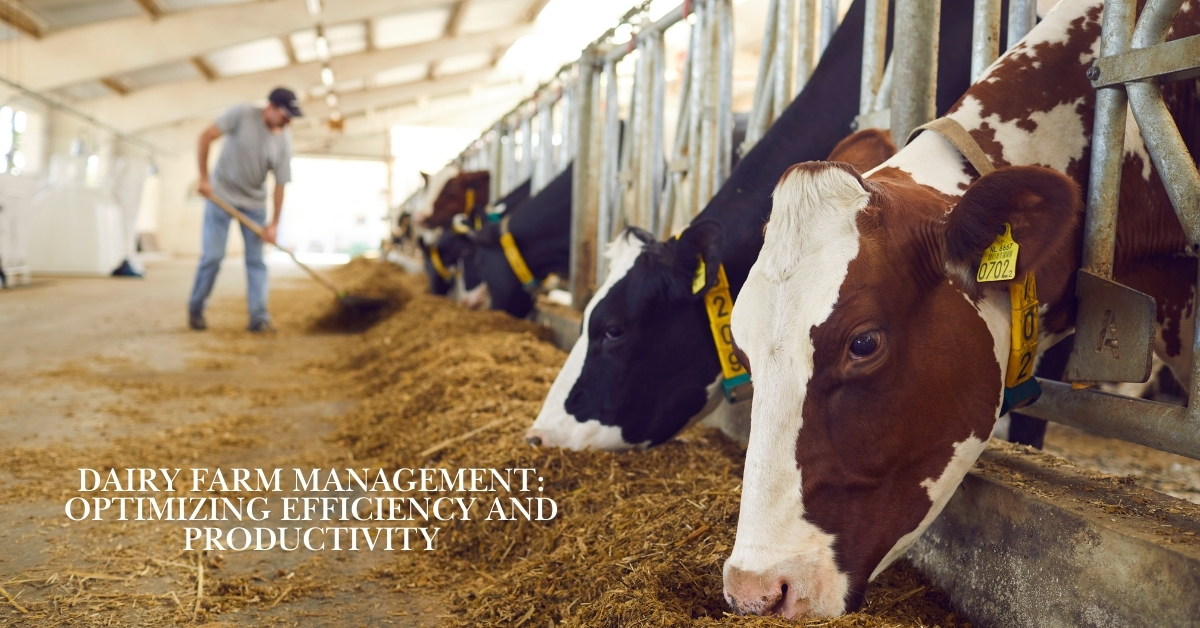Dairy farming plays a crucial role in the agricultural landscape, providing consumers with a steady supply of nutritious milk and dairy products.
Successful dairy farm management involves a multifaceted approach, encompassing the selection of foundation stock, proper housing and infrastructure, efficient feeding and reproduction management, and effective waste handling.
By adhering to best practices in these areas, dairy farmers can ensure a healthy and productive herd, leading to a sustainable and profitable operation.
Let’s explore Dairy Farm Management in more detail!
Key Takeaways:
- Careful selection of foundation stock, considering factors like breed, pedigree, and health, is crucial for building a productive dairy herd.
- A well-designed dairy farm layout with essential infrastructure, such as animal sheds, feed storage, and waste management systems, ensures efficient operations.
- Maintaining strict hygiene, following routine operations, and providing special care for different categories of animals (lactating, dry, pregnant, calves) are essential for herd health and productivity.
- Effective lactation management, focusing on proper nutrition and monitoring milk production curves, is key to maximizing the herd’s milk yield.
- Robust reproduction management, including heat detection, timely insemination, and pregnancy diagnosis, is crucial for maintaining high reproductive efficiency.
- Implementing a balanced feeding regimen, with the right mix of roughages and concentrates, supports the animals’ nutritional requirements and milk production.
- Addressing the fodder shortage through innovative solutions, such as diversifying cultivation and utilizing unconventional land, can enhance feed availability.
- Integrating biogas plants to manage farm waste can generate sustainable energy and provide nutrient-rich organic fertilizer.
- Efficient milk processing and dairy product manufacturing contribute to the overall value chain and meet consumer demands for high-quality dairy products

Selection of Foundation Stock
The foundation of a successful dairy farm begins with the selection of appropriate animals. When it comes to cows, dairy farmers can choose between crossbred or pure breeds, each offering unique advantages. Crossbred cows often exhibit hybrid vigor, combining the desirable traits of different breeds, while pure breeds are prized for their genetic purity and consistent performance.
| Category | Details |
|---|---|
| Preferred Breed | Pure breeds (Buffaloes) |
| Benefits of Pure Breeds | Robust health, high milk yield, adaptation to diverse climates |
| Ideal Cow-to-Buffalo Ratio | 40:60 |
| Application | Commercial dairy farms |
When acquiring new animals, it is essential to consider factors such as age, pedigree, and health status. Newly purchased animals should be closely observed for about two weeks before introducing them to the general herd, and they should be vaccinated against common diseases to ensure the overall health and biosecurity of the farm.
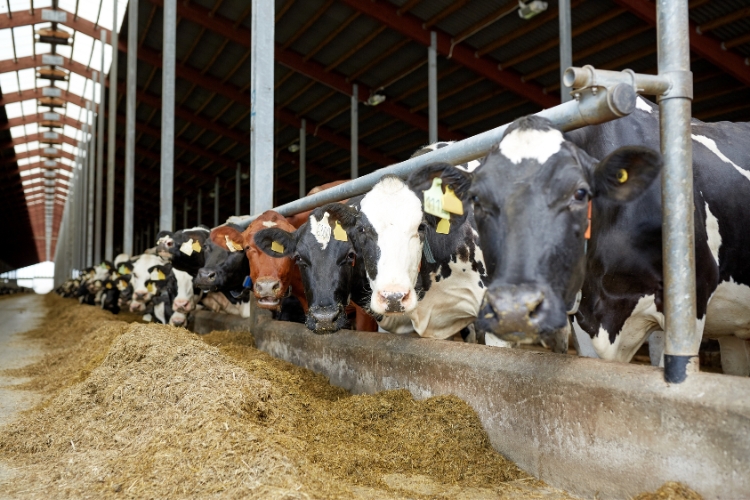
Components of a Commercial Dairy Farm
A well-designed dairy farm comprises several key components, each serving a specific purpose:
- Milch Animal Sheds: Provide shelter and housing for the adult dairy cows and buffaloes.
- Calf Shed: Dedicated space for housing and caring for newborn calves.
- Feed Godown: Storage facility for the farm’s feed and fodder supply.
- Chaffing Area: Space for cutting and processing green and dry fodder.
- Milk Collection Unit: Centralized area for collecting, chilling, and storing the milk produced on the farm.
- Dispensary Room: Equipped with veterinary supplies and medications for the animals’ healthcare.
- Paddock: Designated outdoor space for exercise and grazing.
- Drainage System: Ensures proper waste management and maintains cleanliness.
- Foot Bath: Helps prevent the spread of hoof-related diseases by disinfecting the animals’ hooves.
- Store: Storage area for farm equipment, tools, and supplies.
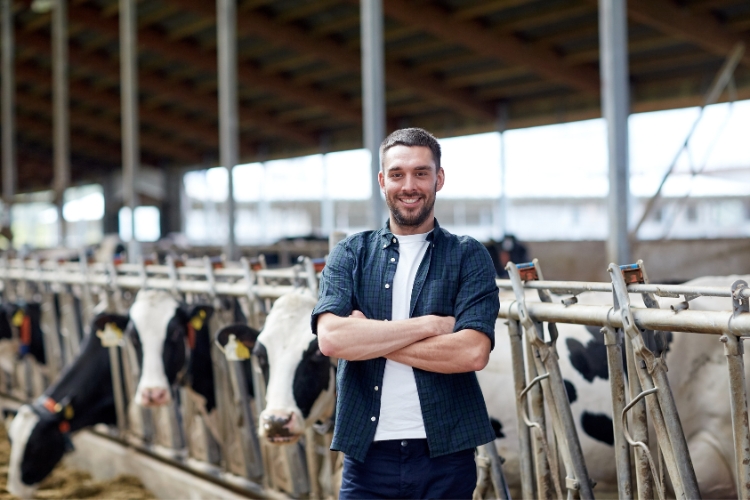
Dairy Farm Layout and Housing Requirements
The layout of a dairy farm can follow different systems, such as the face-to-face or tail-to-tail arrangement of the animal sheds. A well-designed dairy shed for 10 cows should provide adequate space, ventilation, and other critical housing requirements.
Critical Housing Requirements:
- Provide sufficient space for the animals, allowing for comfortable movement and resting.
- Ensure proper ventilation to maintain a healthy, temperature-regulated environment.
- Ensure a good slope on the floor and a well-designed drainage system to promote cleanliness.
- Use a hard, non-slippery floor material to prevent injuries and maintain traction.
- Install a foot bath at the entrance to the shed, filled with disinfectant solutions.
Designing dairy barns for tropical climates requires additional considerations, such as the use of appropriate building materials, shading, and ventilation strategies to mitigate the effects of high temperatures and humidity.

Equipment for a 50-cow Dairy Farm
Equipping a dairy farm with the necessary tools and machinery is crucial for efficient operations. The following table outlines the essential equipment for a 50-cow dairy farm:
| Equipment | Quantity | Material |
|---|---|---|
| Tying Chains | 50 | Iron |
| Milking Pails (10 lt.) | 10 | Steel |
| Milk Can (40 lt) | 7 | Aluminum |
| Milking Machine | 2 | Steel |
| Weighing Balance | 1 | – |
| Sickles | 10 | Iron |
| Brush | 5 | – |
| AI Equipment | One Set | – |
| Veterinary Equipment | – | – |
| Dehorner | 1 | – |
| Branding/Tagging Machine | 1 | – |
Routine Operations and Special Management Care
Maintaining the overall health and productivity of a dairy herd requires a well-executed routine of various operations, including:
- Washing and Grooming: Keeping the animals clean and well-groomed to promote their well-being.
- Cleanliness of Milking Barns: Ensuring a hygienic environment for the milking process.
- Disinfection: Regularly disinfecting the farm premises to prevent the spread of diseases.
- Feeding and Milking: Providing animals with nutritious feed at regular intervals and milking them at consistent times.
- Record Keeping: Meticulously documenting the herd’s performance, health, and other relevant data.
In addition to these routine operations, dairy farmers must also provide special management care for different categories of animals, such as:
- Lactating Animals: Ensuring adequate nutrition and monitoring their health during the lactation period.
- Newborn Calves: Providing proper care, including navel cord treatment, colostrum feeding, and protection from extreme weather.
- Pregnant Animals: Closely monitoring the health and nutritional needs of pregnant cows and buffaloes.
- Dry Cows: Implementing a well-planned dry-off period to prepare the animals for their next lactation.
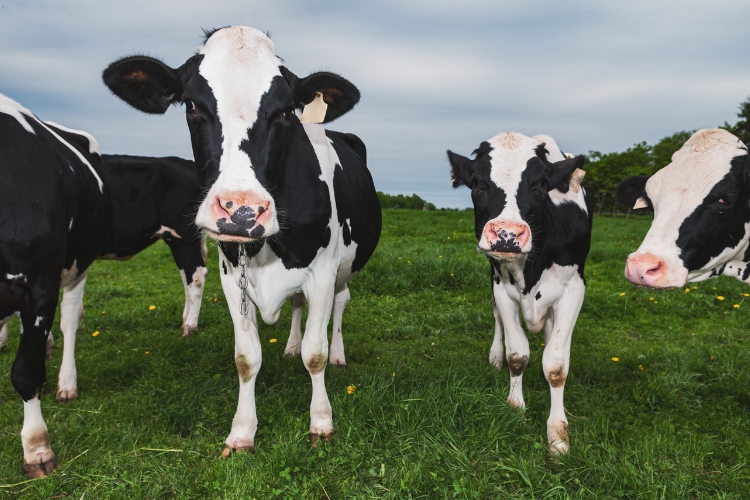
Lactation Management
Lactation management is a crucial aspect of dairy farm operations, as it directly impacts the herd’s productivity and profitability. After calving, a cow produces a specialized milk called colostrum, which is rich in antibodies and essential nutrients for the newborn calf.
| Category | Details |
|---|---|
| Lactation Period | 10 months (305 days) |
| Milk Production Curve | Follows a distinct pattern during the lactation period |
| Nutritional Focus | A balanced diet, particularly during the peak lactation period |
| Goal | Ensure cows reach full milk-producing potential |
Calf Care
Proper care and management of newborn calves are crucial for the long-term success of a dairy farm. Immediately after birth, the navel cord should be treated with a tincture of iodine, and the calf should be fed colostrum within the first 30 minutes. Weak calves should be assisted to suckle during this critical period.
Calves should be kept separate from the main herd in a clean, well-ventilated, and dry environment for the first two months of their life. They should be grouped according to their size and vaccinated to prevent common diseases. Dehorning is typically done around 4-5 days after birth to facilitate easier management as the calves grow.
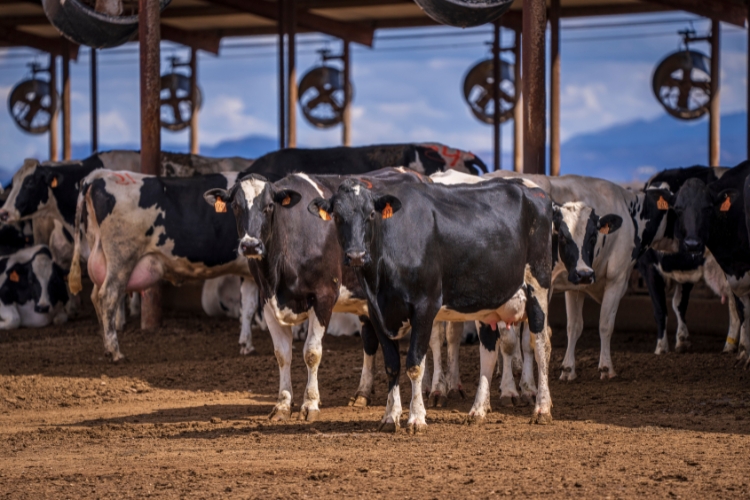
Reproduction Management
| Category | Details |
|---|---|
| Reproductive Efficiency | Essential for sustained dairy herd productivity |
| Puberty Age | 2-3 years |
| First Calf Age | 3-4 years |
| Calving Interval | Every 12-15 months |
| Estrous Cycle | Regular cycles every 21 days |
To achieve this, dairy farmers must closely monitor the herd’s heat detection, perform timely insemination, diagnose pregnancies, and provide proper care for pregnant and postpartum cows.
Meticulous record-keeping of the breeding cycles is also crucial for managing repeat breeding cows and ensuring optimal reproductive performance.
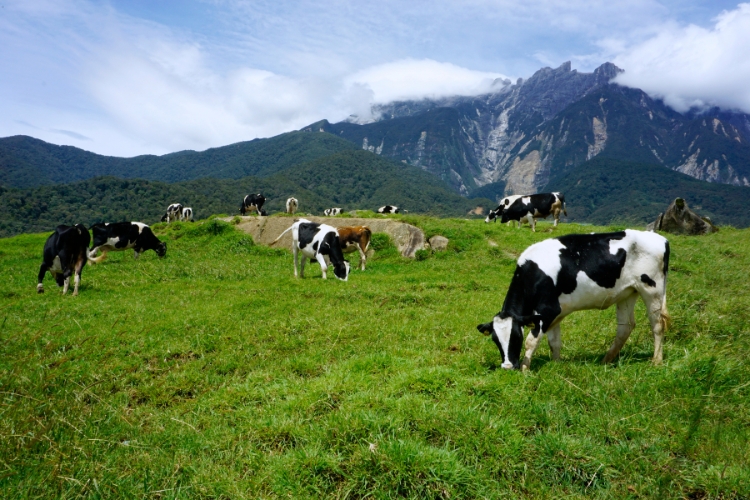
Feeding Management
Cows are ruminants, possessing a complex, four-chambered stomach that allows them to efficiently digest and utilize a wide range of feedstuffs. Understanding the nutrient requirements of dairy cows is essential for formulating a balanced ration that supports their maintenance, growth, and milk production.
| Category | Details |
|---|---|
| Key Nutrient Requirements | Energy, protein, dry matter |
| Crude Protein (DCP) | 14-16% digestible crude protein |
| Total Digestible Nutrients (TDN) | 68-72% |
| Ration Composition | Mix of roughages (hay, silage, green fodder) and concentrates (cereals, oil cakes, by-products) |
Proper fodder cultivation and management can significantly enhance the nutritional quality and availability of feed for dairy animals.
Perennial and seasonal grasses, as well as unconventional options like Azolla, can provide a diverse and nutrient-rich diet for the herd.
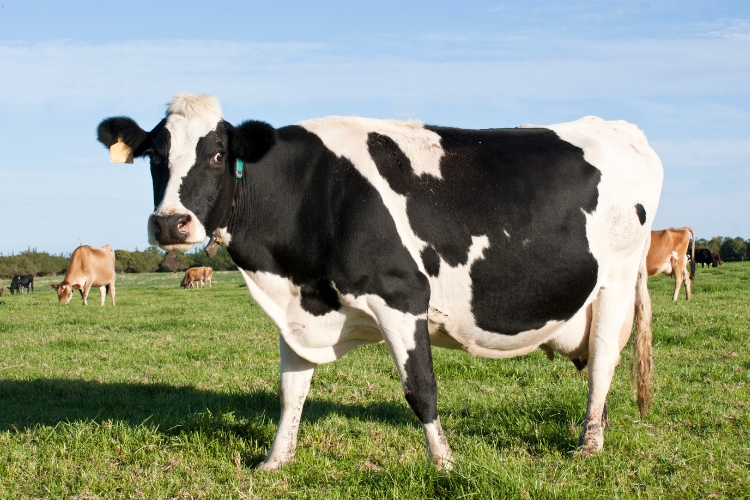
Fodder Scenario and Solutions in West Bengal
The state of West Bengal faces a significant shortage of both green and dry fodder, with a requirement of 439.15 MT of green fodder and 175.67 MT of dry fodder. However, the current availability is only 109.25 MT of green fodder and 138.38 MT of dry fodder, resulting in a substantial deficit.
This situation is primarily due to the limited cultivable land available relative to the human population, as well as the preference for cash crop production over feed grain and fodder cultivation. To address this challenge, several solutions can be implemented:
- Encourage farmers to transition from cash crops to feed grains and fodder cultivation through incentives, market linkages, training, and awareness programs.
- Promote the utilization of unconventional areas, such as watersheds, cultivable wastelands, forest interspaces, and orchards, for fodder cultivation.
- Implement crop scheduling and intensive forage crop rotations to maximize the use of available land.
- Cultivate short-duration fodder crops as intercropping with crops.
- Utilize monocropped land and areas unsuitable for agriculture for fodder production.
By adopting these strategies, dairy farmers in West Bengal can improve the availability and quality of fodder, ensuring a more sustainable and productive dairy sector.
Manure Management and Biogas Production
Effective manure management is crucial for maintaining a clean and eco-friendly dairy farm. One innovative solution is the implementation of biogas plants, which utilize the cow dung produced on the farm to generate combustible gas for energy purposes.
The biogas plant is an anaerobic digester that converts the cow dung slurry into methane-rich gas, which can be used for cooking, lighting, or even powering farm equipment. The spent slurry from the digestion process can then be collected and transferred to a manure pit for further applications, such as organic fertilizer production.
Biogas plants not only contribute to sustainable energy generation but also help manage the farm’s waste in an environmentally responsible manner.
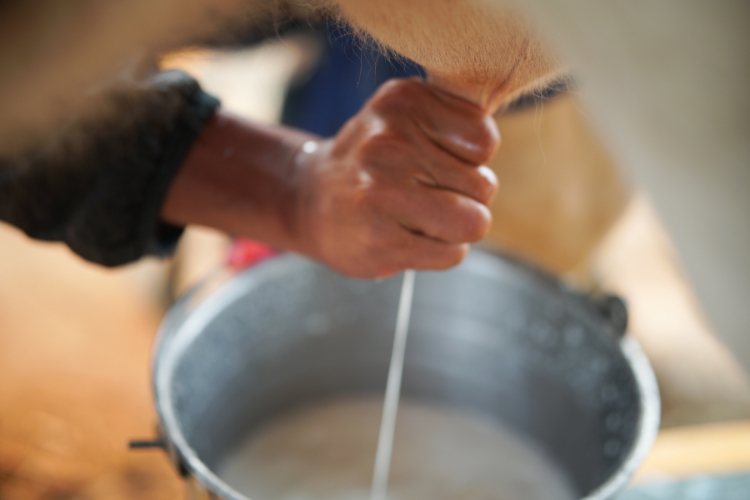
Milk and Milk Products
| Category | Details |
|---|---|
| Definition of Milk | Normal mammary secretion from the complete milking of a healthy dairy animal |
| Milk Composition | Water, fat, protein, lactose, ash (varies by breed) |
| Colostrum | Milk produced in the first few days after calving, rich in antibodies and nutrients |
| Milk Composition Changes | Highest fat and protein content between the 4th and 8th weeks of lactation |
| Dairy Processing Plant Operations | Milk collection, transportation, silo storage, clarification, separation, standardization, homogenization, pasteurization |
| Processing Purpose | Ensures the safety, quality, and shelf life of dairy products |
Conclusion
Successful dairy farm management requires a holistic approach that addresses every aspect of the operation, from the selection of foundation stock to the efficient handling of manure and milk processing.
By adhering to best practices in animal health, nutrition, reproduction, housing, and waste management, dairy farmers can create a sustainable and profitable enterprise that contributes to the overall agricultural landscape.
Continuous innovation, adaptability to changing market demands, and a commitment to animal welfare and environmental stewardship are key factors in the long-term success of a dairy farm.
By leveraging the latest technologies, scientific advancements, and sound management strategies, dairy farmers can optimize the efficiency and productivity of their operations, ultimately providing consumers with a reliable supply of high-quality dairy products.
FAQs
- What are the key considerations for selecting foundation stock for a dairy farm?
- Choice between crossbred or pure breed cows and buffaloes
- Factors to consider: age, pedigree, health status, and adaptation to local conditions
- Importance of biosecurity measures when introducing new animals to the herd
- What are the essential components of a well-designed commercial dairy farm?
- Milch animal sheds, calf shed, feed godown, chaffing area, milk collection unit, and other supporting infrastructure
- Importance of proper layout, ventilation, drainage, and other housing requirements
- Equipment needed for a 50-cow dairy farm, including milking machines, weighing scales, and veterinary supplies
- How can dairy farmers effectively manage the lactation and reproduction cycles of their herd?
- Importance of colostrum feeding and monitoring the lactation curve
- Strategies for heat detection, timely insemination, and pregnancy diagnosis
- Dry-off period management and ensuring optimal calving intervals
- What are the common challenges in fodder availability and how can dairy farmers address them?
- Shortage of green and dry fodder in regions like West Bengal
- Solutions: Encouraging fodder cultivation, utilizing unconventional land, crop scheduling, and intercropping
- Integrating biogas plants to manage waste and generate renewable energy

